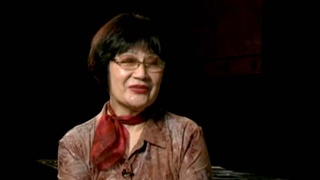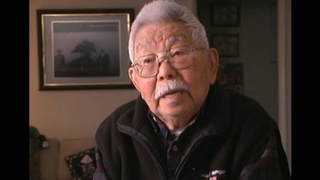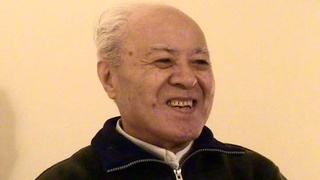Interviews
Regret (Japanese)
(Japanese) Regret for me was how I couldn’t be dutiful for my parents. It’s impossible not to care about what people think. For that I feel like I had caused them troubles. That makes me sad. Rather than being dutiful to my parents, I was undutiful. I think a lot of us feel that way. Many war brides do.
When we talk about our parents and siblings, everybody shares similar sentiment. Even if you’re happy now, you still feel it. We caused troubles to our family. Mothers would cry because of it.
Date: February 6, 2015
Location: California, US
Interviewer: Izumi Tanaka
Contributed by: Watase Media Arts Center, Japanese American National Museum
Explore More Videos

Picture brides and karifufu
An expert researcher and scholar on Japanese immigrant clothing.

Kibei schoolchildren in Hiroshima, Japan
(b.1913) Kibei from California who served in the MIS with Merrill’s Marauders during WWII.

Mother's immigration to U.S. as a treaty merchant
(b. 1927) Japanese American Nisei. Family voluntarily returned to Japan during WWII.

Chose to go back to Japan
(b.1924) Japanese Canadian Nisei. Interpreter for British Army in Japan after WWII. Active in Japanese Canadian community

Marrying Bob against family’s wishes
(b.1920) Japanese Canadian Nisei. Established the Ikenobo Ikebana Society of Toronto

Coming to America
(b.1943) Shin-issei grand master of taiko; founded San Francisco Taiko Dojo in 1968.

The reason for coming to Japan
(b. 1967) Hawai`i-born professional fighter in Japan

Treatment of Japanese Paraguayans during World War II (Spanish)
Nisei Paraguayan, Researcher

Reason to come back to Canada in 1954
(b. 1922) Canadian Nisei who was unable to return to Canada from Japan until 1952

Impressions from interviews with Issei women (Japanese)
Tsuda College President, researcher of Nikkei history

Avoiding the Japanese military
(1914-2004) Nisei Bonsai master in the United States

Tango makes him to stay in Argentina (Spanish)
(1925-2014) La Plata Hochi, Journalist



Government urged Japanese Canadians to go to Japan
(b. 1928) Doctor. Former Chair of the Japanese Canadian Redress Foundation.
